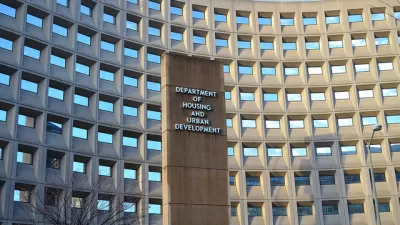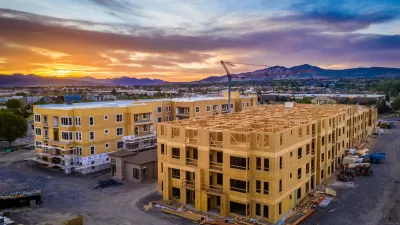As the housing crisis rages on, the housing assistance infrastructure put in place during the pandemic can provide a model for long-term aid programs.

"As the pandemic surged across America, Congress and the White House made available more than $75 billion to support at-risk renters and homeowners, and even more in flexible relief funds that could be used for housing aid." Gregory Heller, a director and affordable-housing subject matter expert at Guidehouse, argues that the government should use this example to implement similar policies outside the pandemic, treating the housing crisis as a disaster not dissimilar from COVID-19 or natural disasters.
The programs billed as disaster relief put in place during the pandemic showed that it is possible to distribute funds and aid quickly, writes Heller. "Now that we have started to view and respond to America’s housing instability crisis as a disaster, one thing is clear: We cannot go back to the way we funded housing before; otherwise, we’ll simply return to the pre-pandemic status quo."
To Heller, the infrastructure developed around pandemic relief programs provides a powerful opportunity to build on these programs and "recognize that this disaster will not end when the health and economic impacts of the pandemic are behind us." Thus, Heller says, the government should continue to invest in and strengthen infrastructure and programs that address housing instability.
FULL STORY: America’s Housing Crisis Is a Disaster. Let’s Treat It Like One.

Study: Maui’s Plan to Convert Vacation Rentals to Long-Term Housing Could Cause Nearly $1 Billion Economic Loss
The plan would reduce visitor accommodation by 25,% resulting in 1,900 jobs lost.

Placekeeping: Setting a New Precedent for City Planners
How a preservation-based approach to redevelopment and urban design can prevent displacement and honor legacy communities.

Using Old Oil and Gas Wells for Green Energy Storage
Penn State researchers have found that repurposing abandoned oil and gas wells for geothermal-assisted compressed-air energy storage can boost efficiency, reduce environmental risks, and support clean energy and job transitions.

Washington State Plans Ambitious ‘Cycle Highway’ Network
The state is directing funding to close gaps in its existing bike network and make long-distance trips more accessible.

Homeowners Blame PG&E for Delays in ADU Permits
The utility says it has dramatically reduced its backlog, but applicants say they still face months-long delays for approvals for new electrical work.

Rethinking Wildfire Defense: How a Landscape Approach Can Protect Neighborhoods
Post-fire analysis of the Eaton Fire reveals that a landscape approach — including fire-resistant vegetation, home hardening, and strategic planning — can help reduce wildfire risk, challenging assumptions that trees and plants are primary fire hazards.
Urban Design for Planners 1: Software Tools
This six-course series explores essential urban design concepts using open source software and equips planners with the tools they need to participate fully in the urban design process.
Planning for Universal Design
Learn the tools for implementing Universal Design in planning regulations.
Borough of Carlisle
Caltrans
Heyer Gruel & Associates PA
Institute for Housing and Urban Development Studies (IHS)
City of Grandview
Harvard GSD Executive Education
Salt Lake City
NYU Wagner Graduate School of Public Service
City of Cambridge, Maryland





























